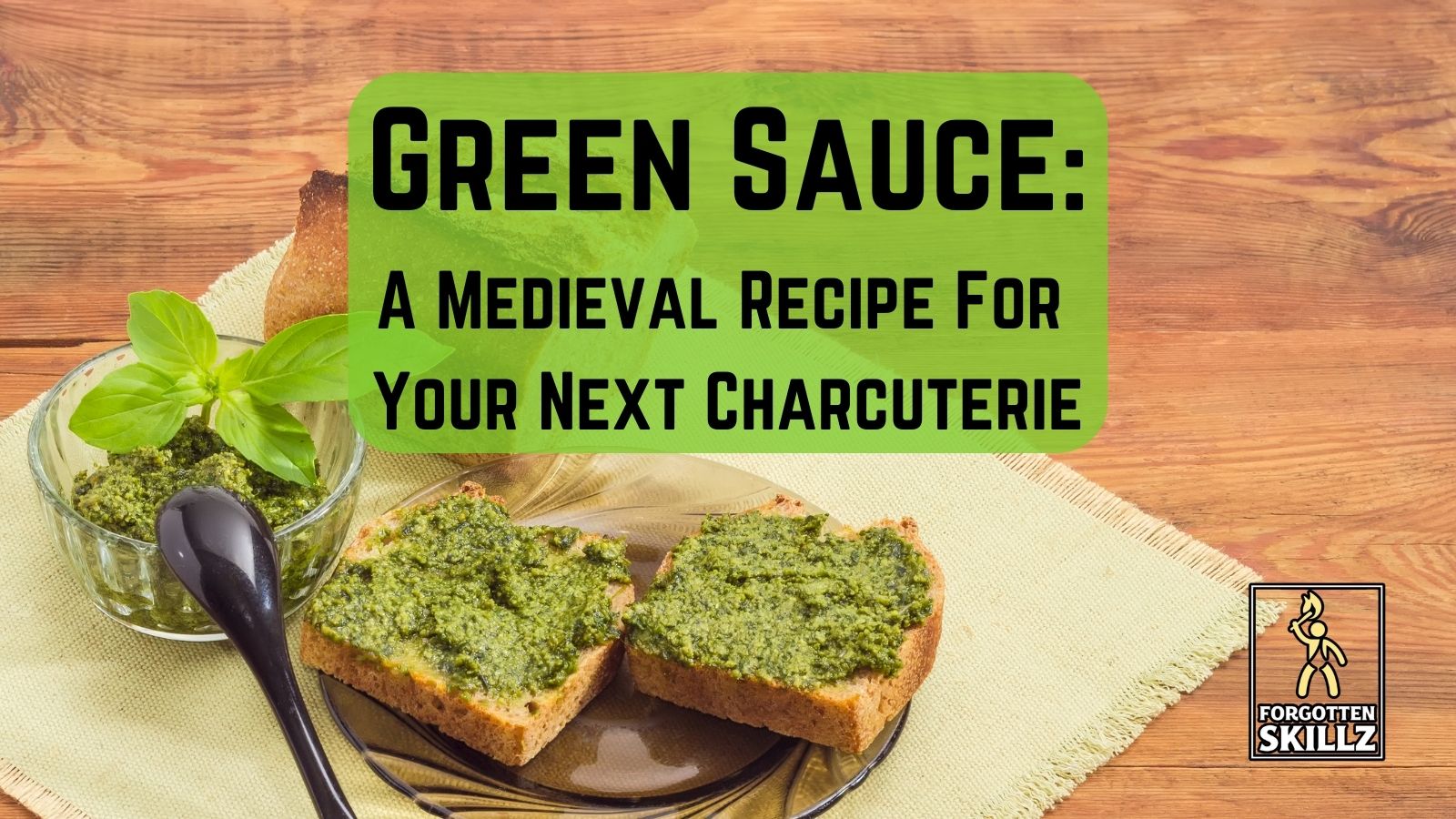Verde Sauce: A Medieval Recipe with a Modern Twist

Have you ever wondered what to do with that loaf of stale bread?
In medieval times, life was dictated by the seasons and the availability of resources. Nothing went to waste, and every ingredient had a purpose. The culinary practices of the period reflected a deep understanding of flavor, preservation, and sustainability. Stale bread, for instance, was a staple ingredient used to thicken sauces, soups, and stews, ensuring that even the hardest crusts found new life in the kitchen.
The “Forme of Cury,” a renowned collection of medieval recipes, offers a fascinating glimpse into this era’s culinary traditions. One such recipe is “Verde Sawse,” a vibrant green sauce made from fresh herbs and spices. This versatile sauce not only showcases the resourcefulness of medieval cooks but also brings a burst of flavor to modern dishes. Let’s delve into this historical recipe and see how we can recreate it in today’s kitchen.
Original Medieval Recipe:
VERDE SAWSE. XX.VII. Take parsel. mynt. garlek. a litul serpell and sawge, a litul canel. gyngur. piper. wyne. brede. vynegur & salt grynde it smal with safroun & messe it forth.
Notes:
- Verde: Named for its green herbs.
- Serpell: Refers to wild thyme.
Modern Interpretation:
To create this vibrant, flavorful sauce, we’ll use fresh herbs and spices available today while staying true to the essence of the original recipe. Here’s a step-by-step guide to making Verde Sauce in a modern kitchen.
Ingredients:
- 1/2 cup fresh parsley
- 1/4 cup fresh mint leaves
- 2 cloves garlic
- 1 teaspoon fresh thyme (or wild thyme if available)
- 1/4 cup fresh sage leaves
- 1/2 teaspoon ground cinnamon
- 1/2 teaspoon ground ginger
- 1/2 teaspoon black pepper
- 1/4 cup white wine
- 1 slice of bread (crusts removed)
- 2 tablespoons vinegar (white wine vinegar or apple cider vinegar)
- 1/2 teaspoon salt
- A pinch of saffron
Instructions:
- Prepare the Herbs and Garlic: Wash and dry the parsley, mint, thyme, and sage. Peel the garlic cloves.
- Grind the Herbs: In a mortar and pestle, combine the parsley, mint, garlic, thyme, and sage. Grind until the mixture forms a coarse paste. Set aside.
- Prepare the Bread and Liquid: Tear the bread into small pieces.
- Combine Wine and Bread: In a separate mortar or in a food processor, wipe out the bowl if necessary, then combine the white wine and bread pieces. Mash or blend until the bread absorbs the wine and achieves a thickened consistency.
- Combine Mixtures: Add the ground herb mixture to the thickened wine and bread mixture. Blend or mash until well combined.
- Season: Add the ground cinnamon, ginger, black pepper, salt, and a pinch of saffron. Mix thoroughly to integrate all the flavors.
- Taste and Adjust: Taste the sauce and adjust the seasoning as needed. You can add more salt, vinegar, or spices to suit your taste.
- Serve: Transfer the Verde Sauce to a serving dish. This sauce pairs wonderfully with roasted meats, fish, or as a flavorful dip for bread and vegetables.
A Taste of History
This modern adaptation of Verde Sauce brings a piece of medieval culinary history to your table. The combination of fresh herbs, spices, and a hint of saffron creates a sauce that is both flavorful and versatile. Whether you’re hosting a medieval-themed dinner, need a unique addition to your charcuterie, or are simply looking to explore historical recipes, Verde Sauce is a delightful addition to your repertoire.
By experimenting with this recipe, using different herbs and ratios, you not only enjoy a delicious sauce but also gain a deeper appreciation for the rich culinary traditions of the past. Bonus points if you adapt this to local herbs you can forage on your next hike. Happy cooking!

